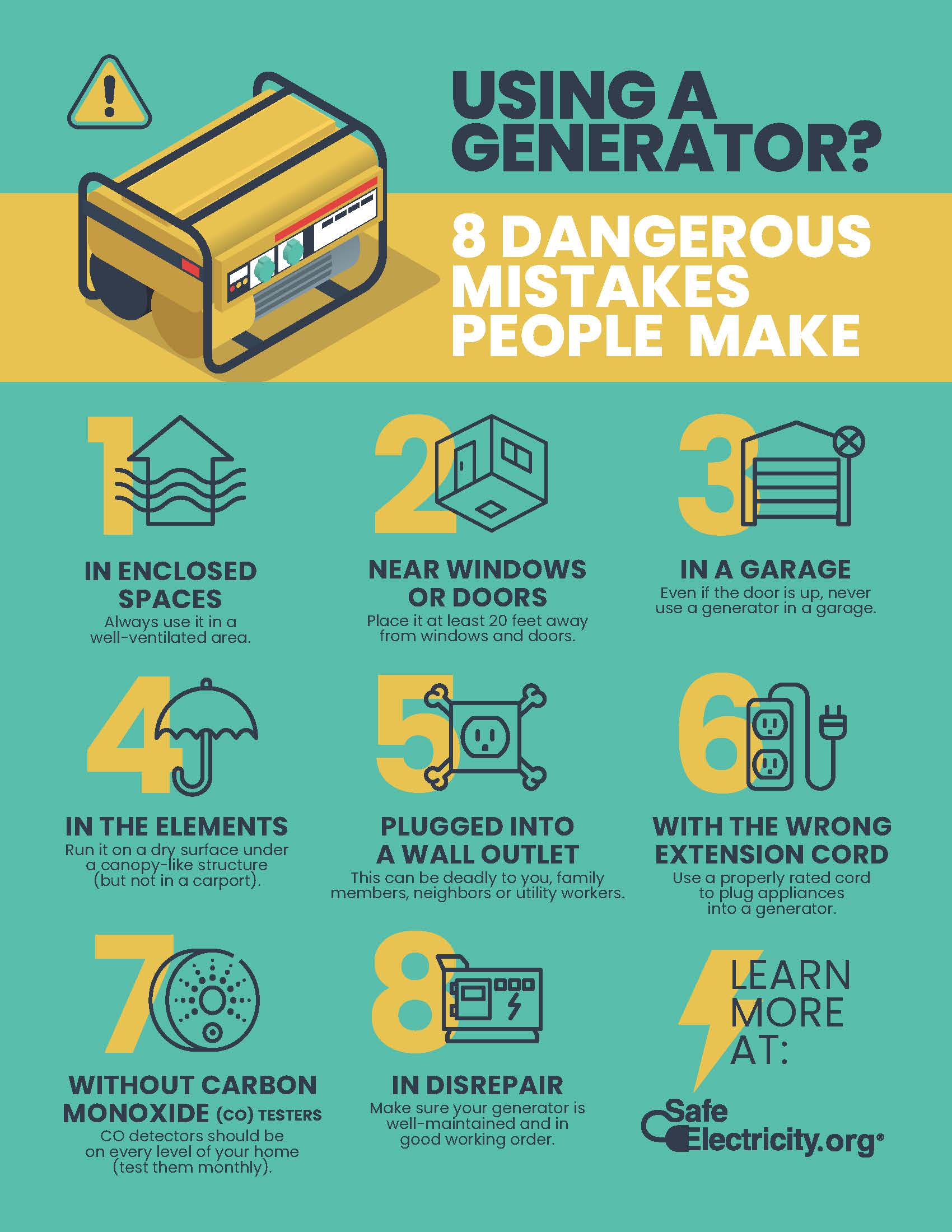Think Safety When Operating a Generator
Thinking Safety Can Save Your Life
A generator can be a valuable piece of equipment to keep appliances working during a power outage. Generators can be either temporary or permanently installed.
A permanent generator is wired into a house by a qualified electrician using a transfer switch that prevents a generator from feeding electricity back into overhead lines, which can be deadly for linemen.
A temporary generator is powered by gasoline and should not be attached to a circuit breaker, fuse, or outlet. Before ever purchasing a generator you need to know the wattage required to run the appliances you will attach to the generator. You also need to know the surge power, which is the power it takes to turn an appliance on.
Once you have purchased the proper generator, follow these tips from Safe Electricity to properly operate your generator:
- Read and follow all manufacturer operating instructions to properly ground the generator. Be sure you understand them before hooking up the generator.
- Never operate a generator in a confined area, such as a garage. Generators can produce numerous gases, including toxic and deadly carbon monoxide. They require proper ventilation.
- Generators pose electrical risks especially when operated in wet conditions. Use a generator only when necessary when the weather creates wet or moist conditions. Protect the generator by operating it under an open, canopy-like structure on a dry surface where water cannot form puddles or drain under it. Always ensure that your hands are dry before touching the generator.
- When you refuel the generator, make sure the engine is cool to prevent a fire, should the tank overflow.
- There should be nothing plugged into the generator when you turn it on. This prevents a surge from damaging your generator and appliances.
- Be sure to keep children and pets away from the generator, which could burn them.
- Shut down the generator properly. Before shutting down a generator, turn off and unplug all appliances and equipment being powered by the generator.
- Remember maintenance between uses. It is also a good idea to inspect the fuel and oil filters, spark plug, oil level and fuel quality and to start the generator on a regular basis before an emergency situation occurs.


